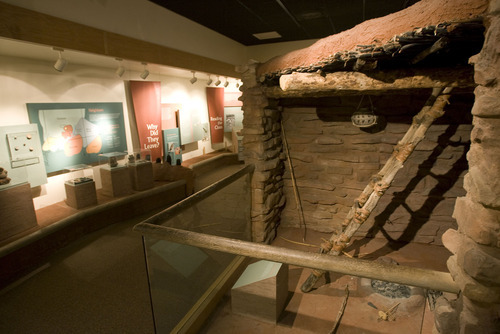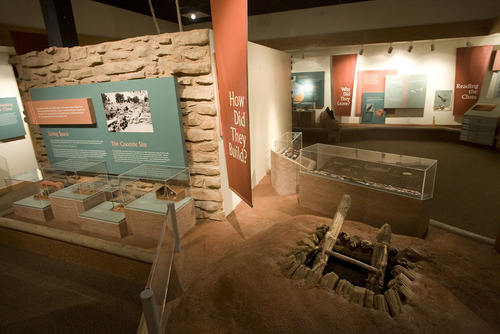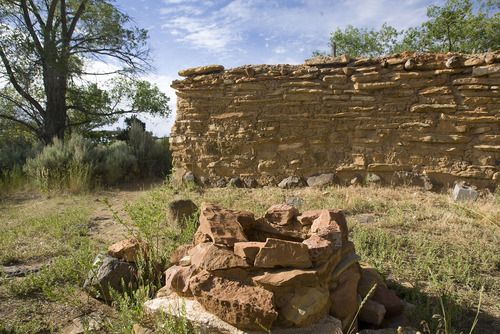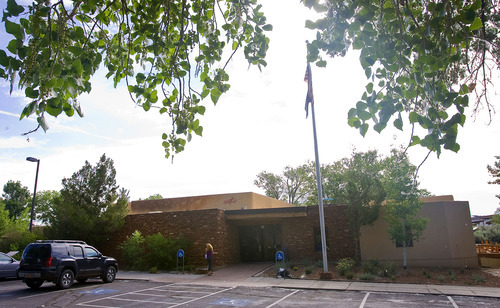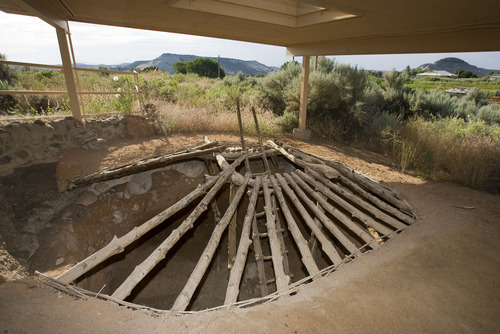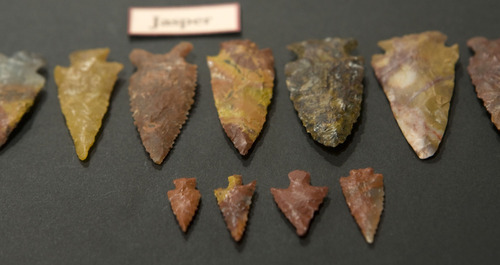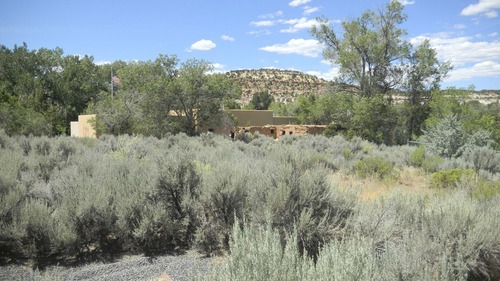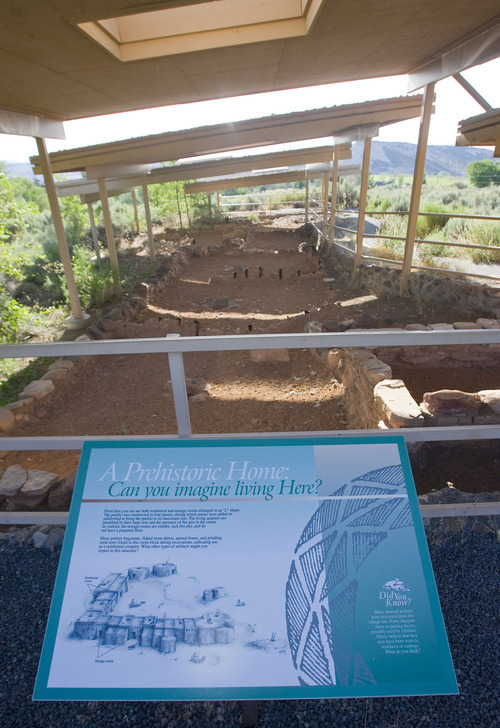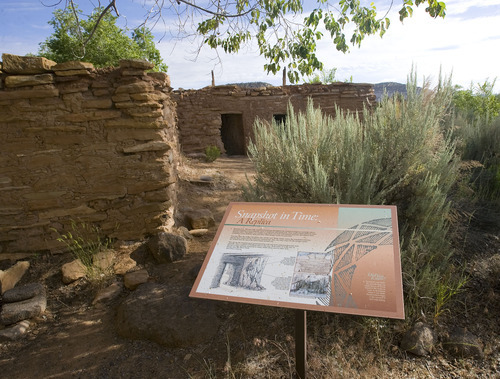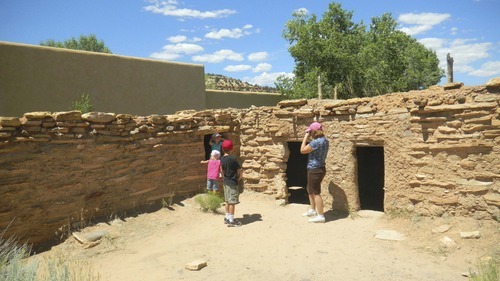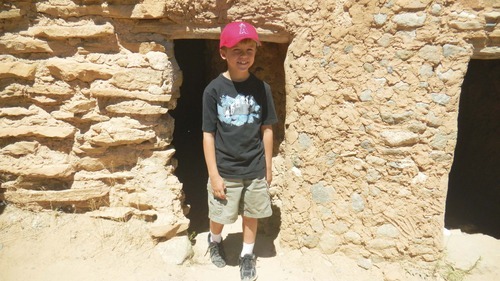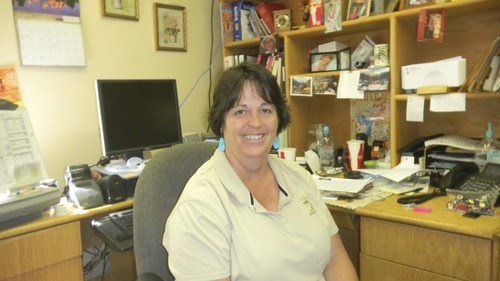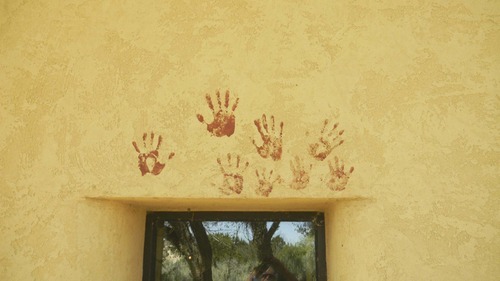This is an archived article that was published on sltrib.com in 2011, and information in the article may be outdated. It is provided only for personal research purposes and may not be reprinted.
Otter Creek and Anasazi state parks could not be more different.
The former is a reservoir-based recreation park popular with anglers, boaters and campers. Anasazi preserves an ancient American Indian village and offers visitors an excellent museum.
But the two parks share one important thing: They are both located in tiny rural Utah towns, where they play important economic roles in their respective communities.
Otter Creek Reservoir is situated near Antimony, a mostly agricultural community of 122 residents. The park and reservoir are in Piute County, the town in Garfield.
Anasazi can be found in the heart of Boulder, a 189-member community that once relied mostly on ranching, but now is largely a tourist town along popular Utah Highway 12.
The two parks provide much-needed employment in struggling rural economies, offer an excuse for people to relocate and help keep tiny schools open. Both have lost full-time employees as Utah State Parks budgets have been cut.
"Otter Creek has been a big economic contributor," said Antimony Mayor Shannon Allen. "We're kind of at the end of the road. You don't come here unless you are lost. But Otter Creek has made it a destination, and the jobs it provides mean a lot to the community."
Law enforcement officer James Lowe is the only full-time state park employee working these days at Otter Creek, where park management was turned over to a private concessionaire this summer in a six-month experiment.
One employee may not seem like much, but Lowe means a great deal to Antimony.
At one time, his four children made up one-fourth of the student body at the town's elementary school, helping to keep it open. And he is often the closest law officer.
"James is wonderful," said Julia Clemmons, a Las Vegas transplant who took over management of a marina, store, restaurant, RV park and motel with her husband in 2007 to serve Otter Creek customers and, with 11 workers, is one of the area's largest employers. "I always call him before 911. He is always right there."
Due to budget cuts, Lowe is now the only state law enforcement officer between Coral Pink Sand Dunes and Yuba State Park. He must patrol big waters such as Fish Lake, Otter Creek and Piute Reservoir, do law enforcement work on popular ATV trails, work on snowmobile trails in the winter and also enforce the law at Fremont Indian State Park. Lowe works under the supervision of park manager Bob Hanover, who is one of four full-time parks employees managing Piute, Fremont Indian and Otter Creek State Parks, down from six workers.
Reacting to pressure from a Utah legislative audit, Hanover did something radical this year at Otter Creek: He turned over the entire management of the campground, group site, day-use facility, small entrance station and boat ramp to Milo Medley, who operates an RV park and restaurant in nearby Marysvale, for the next six months.
"We want to see what it looks like privately," he said, adding that laws will be enforced and all state park standards must be met.
Medley, whose own campground relies heavily on the Piute ATV trail, which is located near Otter Creek, said his facilities provide employment. He estimates a recent four-day UTV Jamboree in Marysvale brought $125,000 into the local economy. He said the concession at Otter Creek is working well.
Others, however, aren't so certain.
Allen, the Antimony mayor, said the contract to manage the park privately was not advertised and was done without public comment. He said several people in town would have bid on it had they known the contract was available, and that some longtime visitors have complained that the park isn't as clean as it once was.
Clemmons said that she has received more calls than normal this summer from visitors looking for information and can't find someone at the state park.
"The park has been well-used and well taken care of the last few years," said Allen, who was mayor when the state threatened to close the park in a 2002 round of budget cuts and lobbied hard to keep it as part of the state parks system. "I would hate to see it go downhill and be anything less than what it has been."
Park visitor Charlene Shields, of Utah County, had nothing but praise for Otter Creek.
"This is a beautiful state park," she said. "It is always clean. … And the people who work here are helpful."
Business owners such as Darrin Bushman, of Marysvale, and Mike Haaland, of Circleville, also stressed the economic importance of the park.
Bushman, who makes accessories for ATVs, said that without the sales tax generated by the park and the ATV trail, the new $6-million Piute High School might not have been built. He said that with mining almost nonexistent and the number of dairies in the county down from 13 to three, tourism allows many residents to stay.
Haaland, a software engineer, followed his parents from Las Vegas to Circleville, where he now serves as the mayor, operates a submarine sandwich shop and works for a software firm.
"If we didn't have Otter Creek, we wouldn't have the traffic," he said.
Business owners in Boulder say much the same thing about Anasazi.
Mary Feiler, who works at the Boulder Mountain Lodge, said most people who stay end up visiting the state park. Some come specifically to see it. And the Boulder Heritage Festival, held in late July at the park, always fills up the lodge.
"There is a lot of history there," said Jill Trombley, who works at the Burr Trail Grill in Boulder. "It's cool it's a park. Our town is built around the site. The park has given people jobs and it has done quite a bit for the economy. It's cooler than a miniature golf course."
The park's curator retired and has not been replaced, leaving it with two full-time employees. Brenda Woolsey, whose grandfather excavated one of the ruins at the park, manages the retail store at Anasazi, one of the first at a state park. She said the park serves as a community gathering place used for yoga, volleyball and a movie night once a month in the winter when visitation drops.
"Anasazi State Park is very important to the town of Boulder both financially and culturally," said Boulder mayor Bill Muse. "Many of the 25,000 visitors per year to the park and museum decide to stay a day or two. The visitors also stop at local restaurants, use local gas stations, visit businesses and stay at motels, helping to increase local revenue and providing an economic benefit for the area."
Few have more of a claim on Anasazi than Larry Davis, an archaeologist who served as the park's manager for over 30 years and lives almost across the street. He said that when the park opened in 1970, Boulder was little more than a cattle ranching town, with a few people working at a small power plant. The park was the only business in town, except for the small store, for many years. Until Highway 12 over Boulder Mountain was paved in 1985, winter visitation was almost nonexistent and the town was one of the most remote in Utah.
Davis remembers his first Sunday in church when a longtime resident told him that "we don't need college-educated people coming into town and taking our jobs." He said the woman turned out to be "a nice lady."
He said that, as an archaeologist, he found it important to preserve the site to educate people on the importance of prehistory and hopefully instill more respect. When the museum was expanded and improved in 1995 and 1996 into a Class A storage facility, Davis said the little park began to generate more income.
Davis' wife, Judy, is the Boulder town clerk. She said that the park helps bring people into town, creating jobs.
That's a common theme at the two parks located in tiny Garfield County towns that might not be well-known, but remain incredibly valuable.
wharton@sltrib.comTwitter @tribtomwharton Anasazi State Park • This park is located in Boulder, a Garfield County town of 189 residents. Established in 1970, it provides protection for a large Ancestral Puebloan ruin and Utah artifacts as well as a museum, picnic area, information center and retail store outlet. In the 2010 fiscal year, the park hosted 24,048 visitors, who each required a $9.77 subsidy. The park generated $141,003 in revenue and cost $375,995 to operate. It now has two full-time staffers after its curator retired and was not replaced.
Otter Creek State Park • This park is located near Antimony, a Garfield County town of 122 residents, though some of the economic benefits go to Piute County where the park is located. The reservoir-based park, known for excellent fishing, was established in 1965 and was considered for closure in 2002. As part of a six-month experiment this year, it is being managed by a private concessionaire. In the 2010 fiscal year, the park hosted 64,752 visitors, each requiring an 84-cent subsidy. It generated $166,629 in revenue, and cost $221,217 to run.


